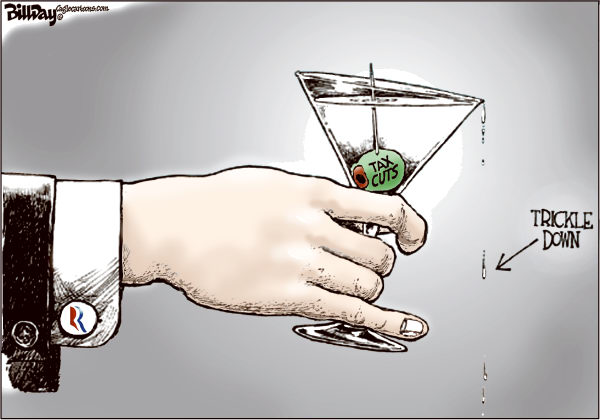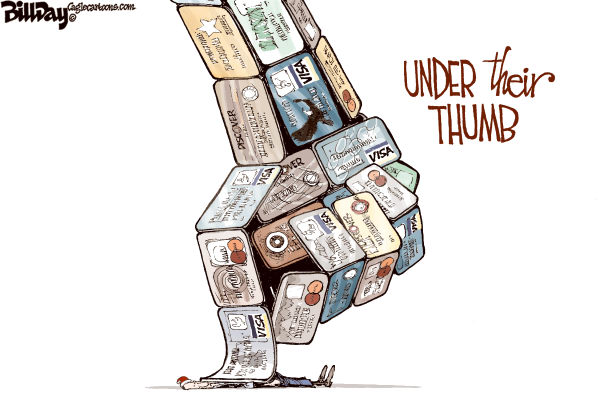I think that as journalists (and cartoonists) work as freelancers for lower and lower fees, the respect and quality of the working relationships we have with our clients also declines – as Susie writes, a race to the bottom for our professions and ultimately for the quality of our work, and the quality of the media.
From Susie:
What is your journalism challenge? What problem are you working to solve?
 Like every industry, journalism has a labor problem. As media companies have grappled with digital disruption, they’ve responded by cutting jobs and salaries, but not necessarily cutting “content.” That work has instead been assigned to a growing legion of freelancers and contractors — independent work that has always existed, but that has taken on a more vital role to the survival of many cash-strapped media institutions, both new and legacy.
Like every industry, journalism has a labor problem. As media companies have grappled with digital disruption, they’ve responded by cutting jobs and salaries, but not necessarily cutting “content.” That work has instead been assigned to a growing legion of freelancers and contractors — independent work that has always existed, but that has taken on a more vital role to the survival of many cash-strapped media institutions, both new and legacy.
With so many opportunities yet so few resources, freelancers are by nature pitted against one another in a race to the bottom. This doesn’t work particularly well for anyone: for editors, who need a consistent and high-quality pool of writing, staffers, who risk being undercut at their jobs, or readers, who want to support living wages for workers.
This is not to say that freelance journalism can’t work! But it can’t work like this.
How would solving this problem help journalism?
While the Internet has done much to lower the entry barrier to media work — which is great — it’s also lowered the standards of that work — which is not great. Many freelancers report that they receive little to no editing or fact-checking. In a race to pump out more “content,” this has the potential to result in huge errors — and to promote a different kinds of journalism altogether.
In an industry that prides itself on transparency and ethics, there are no standards as to how these workers or their work should be treated. Living wages and ethical work standards are in everyone’s best interest.
Who is tackling a similar problem and how is your approach different?
There are many efforts aimed at supporting independent workers across industries. Projects specific to journalism — such as Contently, Beacon and WordRates — have largely centered on gig-matching, which has its own strengths, but does not address many of the issues facing freelancers.
A single tool or platform can’t fix such a complex problem. I believe organizing of freelancers is best done in small cooperative affinity guilds, where problems such as lack of administrative and legal assistance, libel insurance, press passes, and tools, and service fees can be better solved. The first step toward this vision is promoting more transparency and cooperation in a field that’s traditionally very individualistic and competitive. I plan to negotiate with writers, editors, and publishers to find common ground on these issues. I’m also talking to creators of digital payment and publishing tools about how those might better work for independent journalists.
What are the first questions you plan to pursue?
- Is this employment shift in media to more contracts and fewer jobs actually indicative of and part of a larger shift in work across industries? If so, what does that mean for freelance journalists, and how might we work in solidarity with freelancers in other industries?
- Who are the freelance journalists working in the U.S. today? Where are they, how are they working, and for how much?
- In what ways does contract journalism work and not work for editors and publishers? How do they perceive freelancers? Who do they think we are, and how do they think we work?
What are the first steps you plan to take in working on your challenge?
I’m interviewing freelancers, editors and publishers about these labor issues and will be publishing some of that work on Patreon for my subscribers. Those funds will support some of my more ambitious plans for this project. The first batch will go toward making Who Pays Writers, a project of Manjula Martin and Scratch Magazine, into a searchable database.
Who Pays is an unmatched resource for freelancers — users submit not just rates, but also information about how long payment took, the terms of their contracts, and any other issues that arose. Overall, this data shows that there are no standard terms or rates for writers, even at the same publication.
We also have some more ambitious plans for using this data to better promote wage transparency.






















